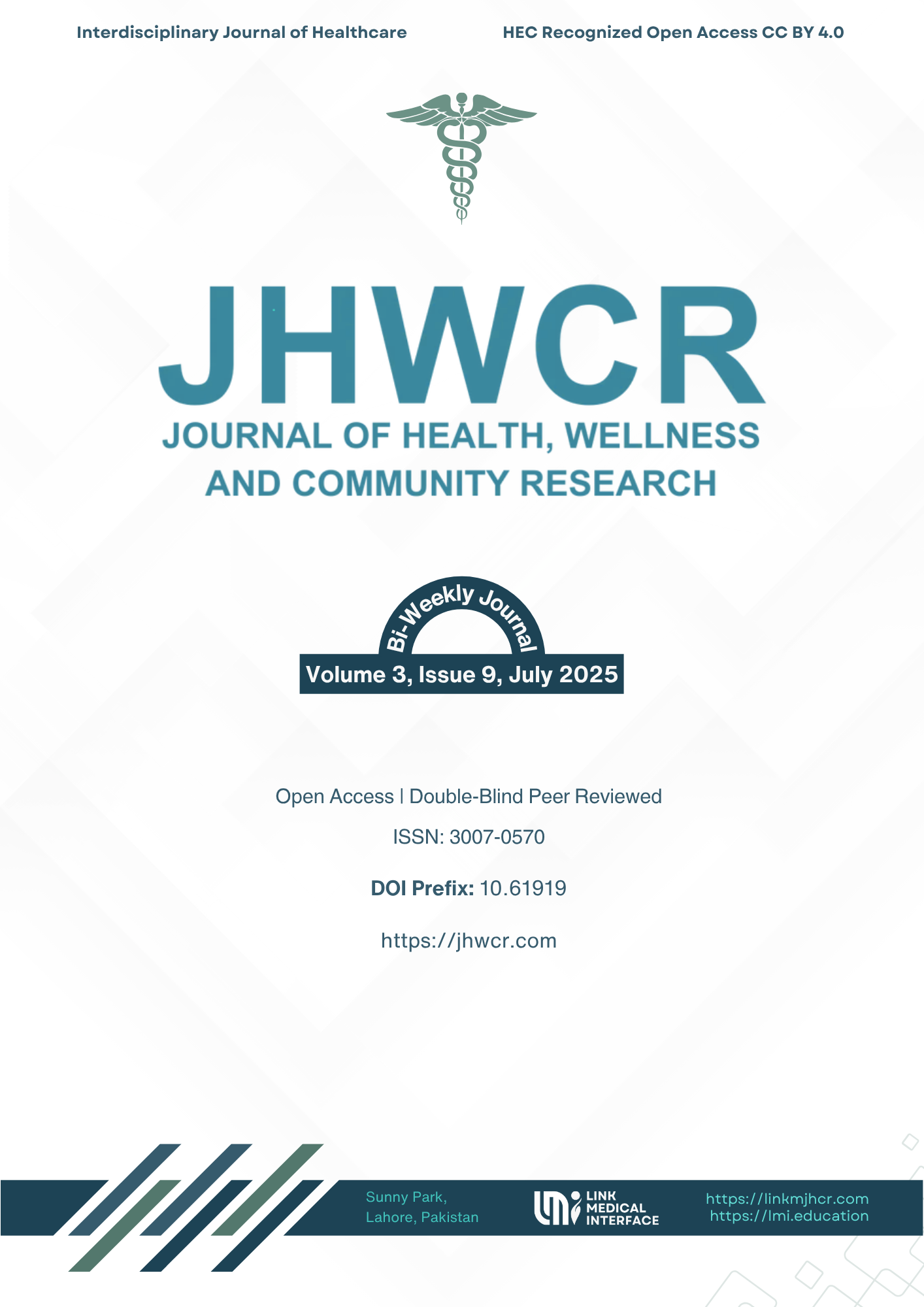Association of Infections with Relapse in Steroid Sensitive Nephrotic Syndrome in Children
DOI:
https://doi.org/10.61919/83mcja89Keywords:
steroid-sensitive nephrotic syndrome, relapse, infections, children, respiratory tract infections, spontaneous remission, corticosteroidsAbstract
Background: Steroid-sensitive nephrotic syndrome (SSNS) is the most common subtype of pediatric nephrotic syndrome, characterized by a high relapse rate, often precipitated by infections. Despite extensive documentation of infection types in SSNS, there is limited data on their correlation with relapse severity and treatment response in resource-limited settings such as Pakistan. Objective: To evaluate the frequency and types of infections in children with SSNS and assess their association with disease relapse and remission patterns, distinguishing between spontaneous and steroid-dependent recovery. Methods: This prospective analytical study was conducted at Combined Military Hospital, Rawalpindi, from January to December 2024. A total of 270 children aged 1–12 years with biopsy-confirmed SSNS presenting with acute infection were followed for relapse occurrence. Infections were clinically categorized, and patients were monitored for spontaneous versus steroid-induced remission. Statistical analysis was performed using SPSS v26, with p ≤ 0.05 considered significant. Results: Of 270 patients, 215 (79.6%) experienced relapse following infection. URTI (37.8%) and LRTI (21.1%) were the most frequent infections. Spontaneous remission occurred in 136 (63.2%) cases, while 79 (36.7%) required intravenous prednisolone. Diuretic use was significantly higher in the steroid group (p < 0.001, OR 5.54, 95% CI 3.13–9.81), although infection type did not significantly predict remission type. Conclusion: Infections, particularly respiratory tract infections, are major contributors to SSNS relapse. While most children achieve spontaneous remission, hypoalbuminemia and diuretic use are indicators of severe relapse requiring steroids.
Downloads
Published
Issue
Section
License
Copyright (c) 2025 Andleeb Tariq, Yusra Zia, Shamama Hasan, Muhammad Amir Majeed, Umme Sarhad Khan Yousafzai, Musarat Nisa (Author)

This work is licensed under a Creative Commons Attribution 4.0 International License.


